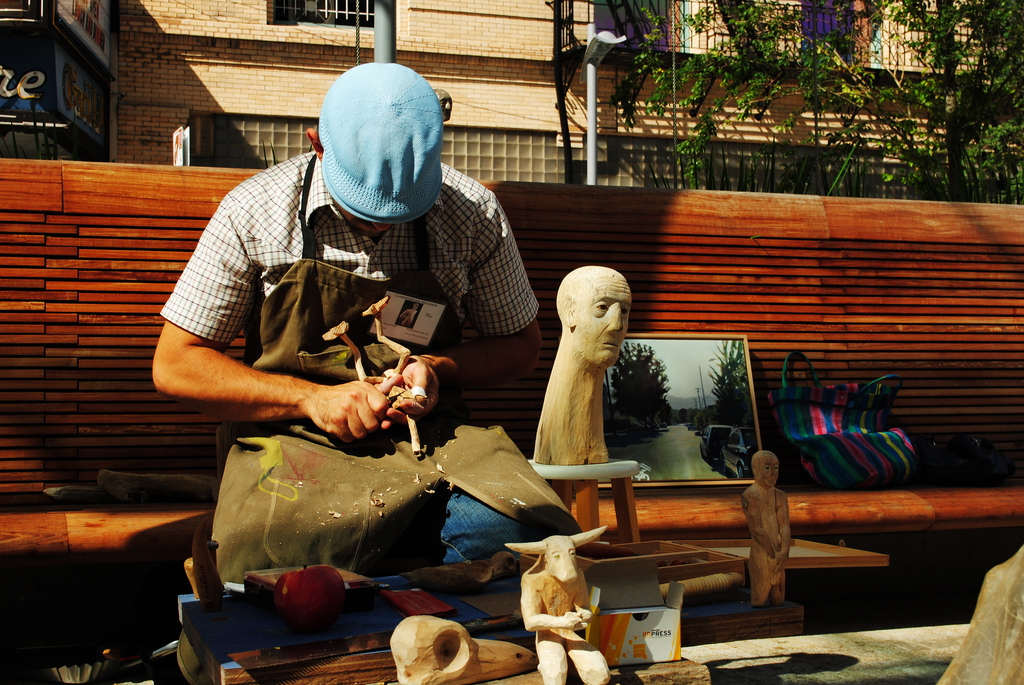
Merriam-Webster Dictionary defines a craftsman as, “a person who makes beautiful objects by hand” or “a person who is very skilled at doing something.” The definition goes on to specify that a craftsman is “one who creates or performs with skill or dexterity especially in the manual arts.”
Usually, when a person thinks of a craftsman, they think of a sculptor or carpenter who takes raw materials and creates something functional or artistic. But, as acting is a craft we can think of actors as craftsmen as well…
Acting as a Craft
A stage play, film script, or audition side is only words on a page. The words are the same words that appear in newspapers, novels, and on street signs. They are not a performance in themselves, but a guideline that requires the interpretation of an actor to come alive. Scripts are the raw materials that an actor works with to gradually craft a performance.
There are hints within a script, just as there are hints within the raw materials of other craftsmen. Carpenters use different types of wood, and sculptors different types of clay, to build the products they desire. An actor too must take heed of their raw material and adapt to its needs. Different subjects, genres, and mediums require different approaches. Acting may not fit the description of a “manual art,” but it is, at the very least, a physical art.
Craft as a Process
No matter what actor you ask, they all start somewhere. Each has a specific process from which they build a character. For example, Robert De Niro says, “I just try and find out as much about what that character is. Usually from real people…” He subscribed to a Lee Strasberg’s method and built the foundation of his characters on his observation of real people and the personal experiences that he had himself.
The point is that everyone starts in the same place, with the same script, but must build a character through their craft. As intimidating as that may sound, craft offers the advantage of being a gradual process.
Actors start with the script and make initial observations about the character. In subsequent reads, actors observe the stage directions and other characters dialog about their character to further inform their creation. Then, actors apply their own past and their own world views to the character. In the same way that De Niro observes the world around him, all actors can add seasoning to their characters through observation.
How to Build a Character
The craft of acting follows a different order for everyone. Actors must experiment and find the process that works best for them. However, as a general guide, actors should start with the script and continue improving until closing night.
Craft a Role from the Start
- Read the script several times – An actor must know the entire story better than the audience. Each time you read the script, observe something new about your character and add it to your performance.
- Research the script – Find out about the time period, location, political atmosphere, and history of the world of the play or film. Apply all of this information to change the way a character moves, speaks, and acts.
- Collaborate – Listen to your director’s notes, and listen to your fellow actors performances. Everything that they say and do is a hint to help you put the finishing touches on your character.
- Continue to Discover – After opening night, or after the first take, continue to learn about the character. Take lessons from each scene and apply them to the next scene. Continual learning makes stage performances vibrant throughout the run and film performances captivating from start to finish.
Actors may not be the best at building houses or throwing ceramic pots, but that does not mean that acting is not a craft.
All craftsmen start with something rudimentary and alter it until it becomes something of value. Acting is the craft of building a physical performance from words. When practiced with passion, acting definitely fulfills one of Merriam-Webster’s definitions: “a person who is very skilled at doing something.”
[su_note]Learn more about the School of Acting at the New York Film Academy by clicking here.[/su_note]